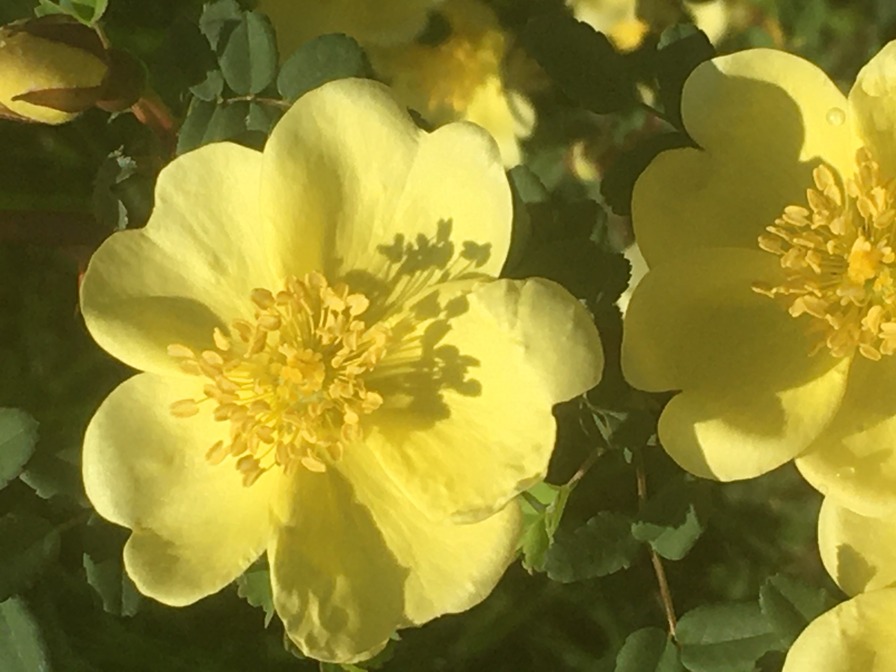|
|
'Rosa xanthina 'Lindleyii'' rose Description

Photo courtesy of Steven Cook
HMF Ratings:
91 favorite votes.
Average rating:
EXCELLENT.
Bloom:
Light yellow. Moderate fragrance. 5 to 20 petals. Average diameter 2". Medium, semi-double to double bloom form. Once-blooming spring or summer.
Habit:
7 to 13 leaflets.
Height: 6' to 10' (185 to 305cm). Width: 6' (185cm).
Growing:
USDA zone 6b through 9b (default).
Patents:
Patent status unknown (to HelpMeFind).
Parentage:
If you know the parentage of this rose, or other details, please contact us.
Notes:
R. xanthina belongs to section Pimpinellifoliae (spinosissima). From Korea and N. China. This double-form was named by Lindley in 1820 from a painting. Collected by Frank Meyer in Northern China in 1907. Plants grown from seed first flowered at the Arnold Arboretum in 1915. See Rosa xanthina f. normalis for the single-form.
When R. ecae was introduced to Europe in the late 1800's, botanists initially decided that it was Lindley's R. xanthina. In 1899, Curtis's Botanical Magazine figured R. ecae with the name R. xanthina. This identification was repeated in Journal des roses in 1901.
L'Haÿ-les-roses labels R. xanthina duplex as a hybrid spinosissima, as it was characterized in early literature. In fact, R. xanthina has blooms with 5 to 24 petals and was sometimes called "Double hugonis." It is maintained as a distinct species in Flora of China, but one authority suggested that it is only a form of Rosa hugonis.
R. xanthina is distinguished from R. spinosissima by the absence of bristles on the main canes. Rosa hugonis is purported to have bristles on the main canes.
|